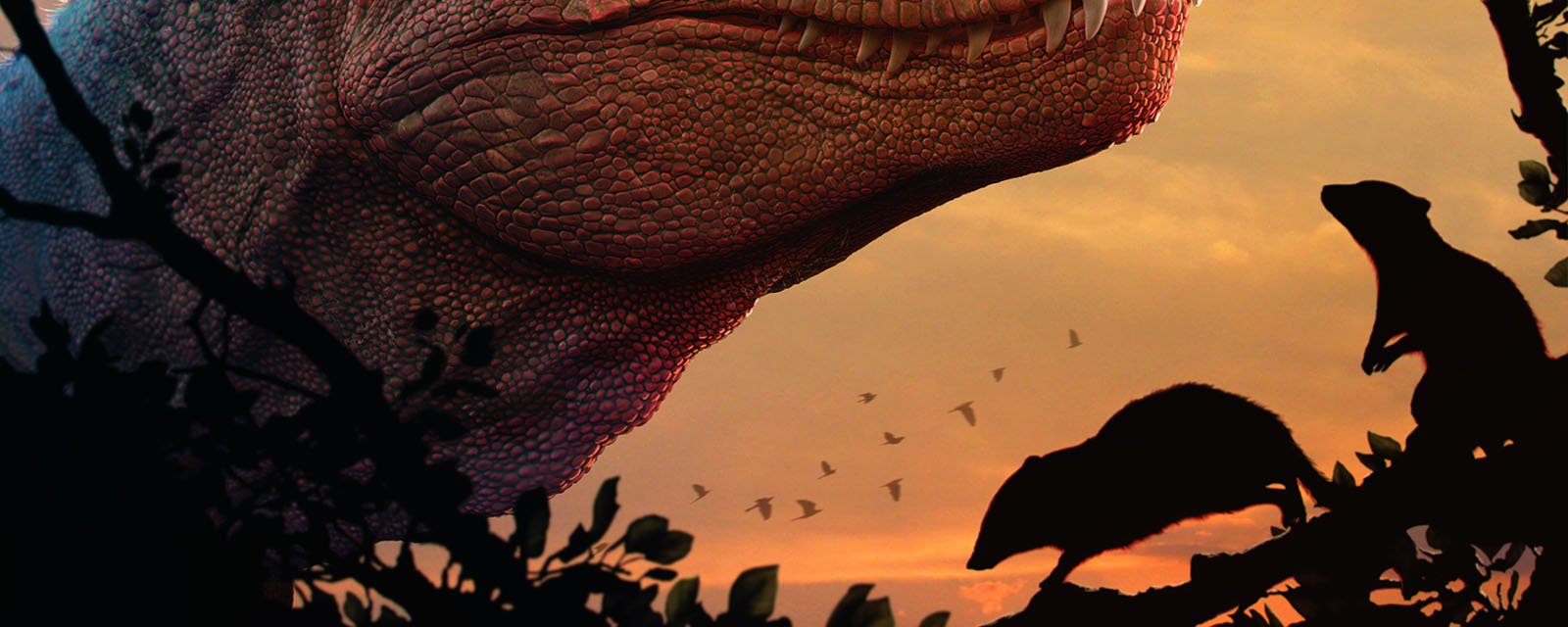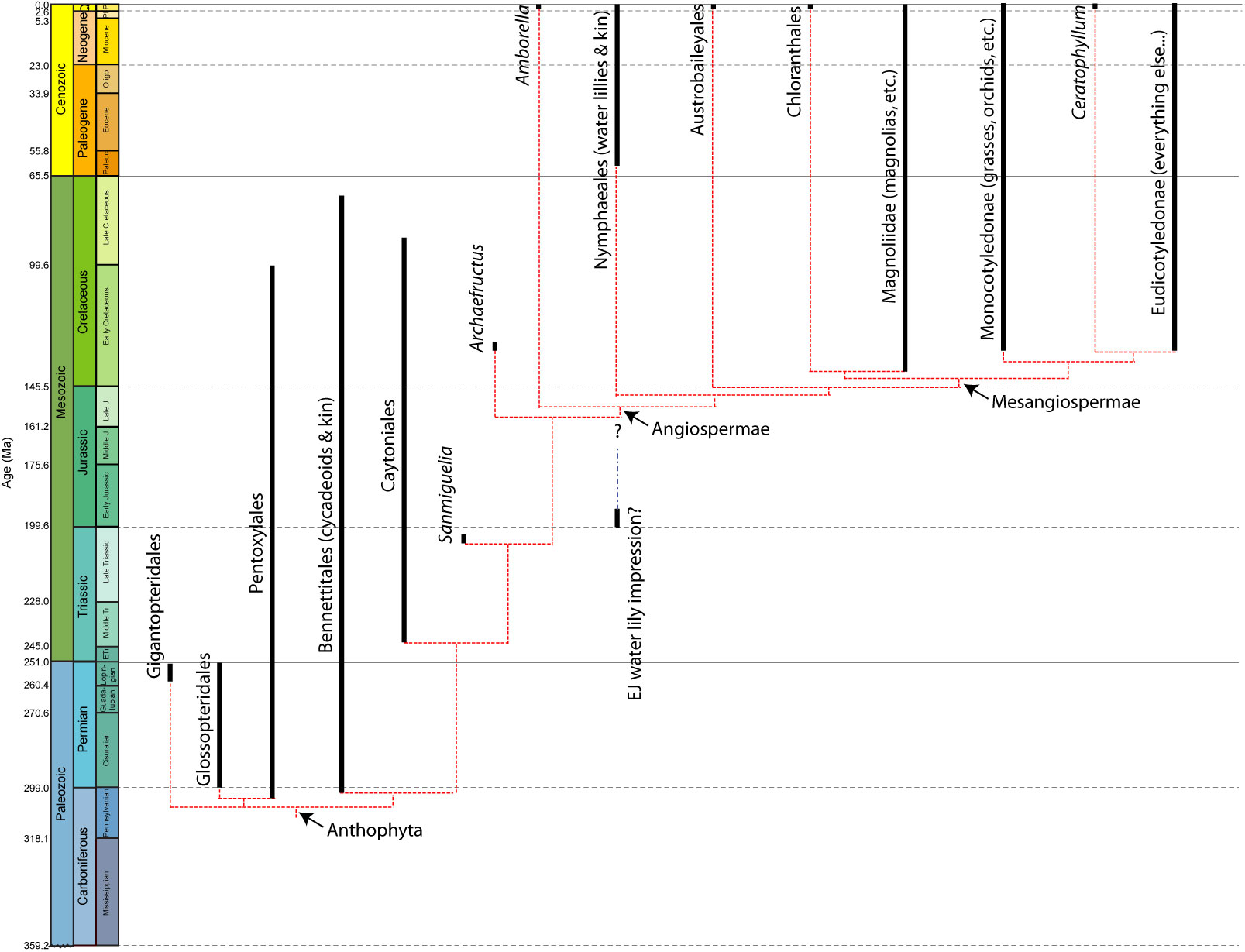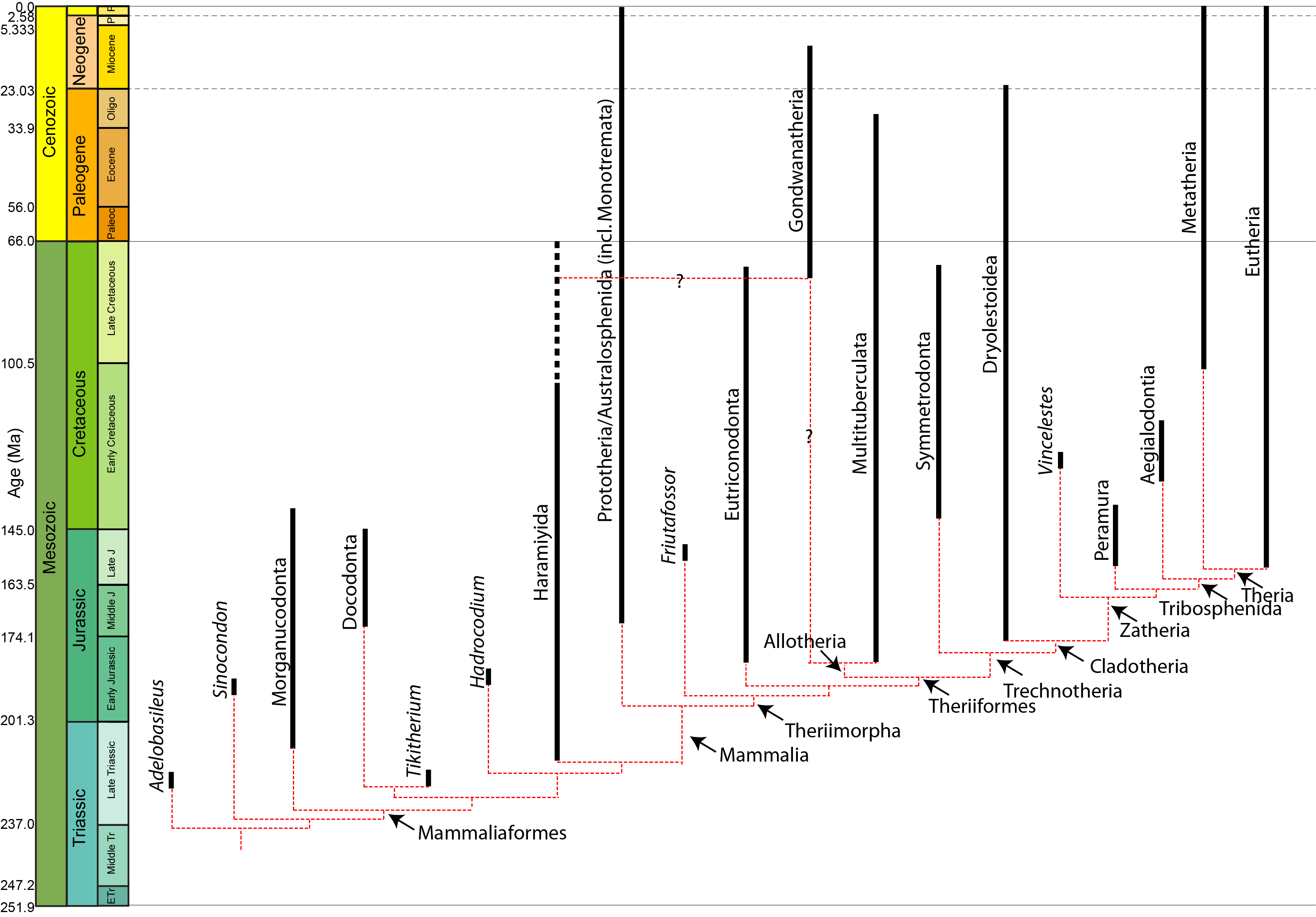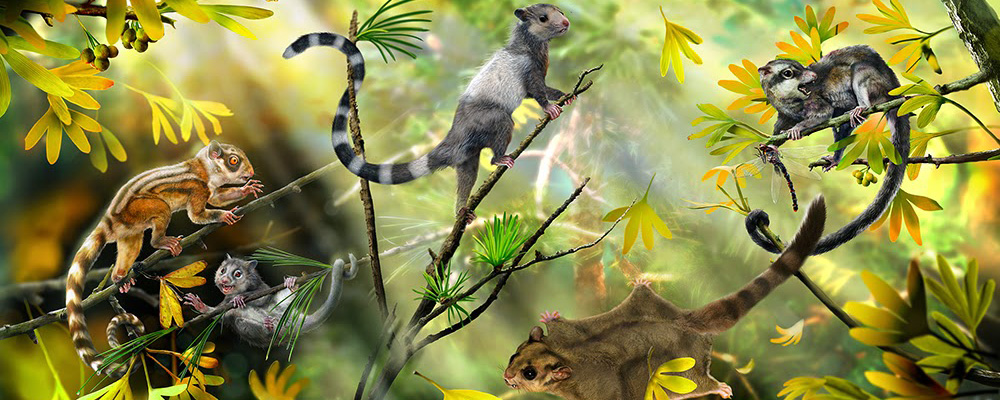


"I have just read Ball's Essay. It is pretty bold. The rapid development as far as we can judge of all the higher plants within recent geological times is an abominable mystery. Certainly it would be a great step if we could believe that the higher plants at first could live only at a high level; but until it is experimentally [proved] that Cycadeae, ferns, etc., can withstand much more carbonic acid than the higher plants, the hypothesis seems to me far too rash. Saporta believes that there was an astonishingly rapid development of the high plants, as soon [as] flower-frequenting insects were developed and favoured intercrossing. I shd like to see this whole problem solved. I have fancied that perhaps there was during long ages a small isolated continent in the S. hemisphere which served as the birthplace of the higher plants - but this is a wretchedly poor conjecture." Excerpt of a letter written by Charles Darwin on 22 July 1879 to Joseph Hooker
"Milk: it does a body good" -- American Dairy Farmers ad campaign, 1985
BIG QUESTION: How did the modern terrestrial community arise?
The Cretaceous Terrestrial Revolution (KTR)
The landscapes of the Jurassic and Cretaceous were dominated, at least at first glance, by dinosaurs and conifers. But these are only the large animals and plants. Beneath their feet/branches, the world of the Mesozoic underwent a great transformation. While the the Jurassic still resembled the Triassic in terms of the little things (ferns and small gymnosperms among the plants; small sauropsids and the new mammaliaformes among the animals), there were major changes in the Cretaceous Period. In fact, by the end of the Cretaceous, the small land organisms of the Mesozoic would broadly resemble those of today: flowering plants (Angiospermae); insects which feed on them; and mammals.
In 2008 paleontologist Graeme Lloyd and colleagues termed this the Cretaceous Terrestrial RevolutionL (or KTR).
Naked Seeds: the "Gymnosperms"
The seed plants (Spermophyta) today include the non-flowering Acrogymnospermae and the flowering Angiospermae. The term "gymnosperms" refers to the paraphyletic grade of non-angiosperm spermatophytes: this includes the acrogymnosperms, the non-flowering stem-angiosperms, and a set of basal clades collectively called "pteridosperms" ("seed ferns", because of their leaf shape).
In spermatophytes, the old spore plant life cycle is replaced with a new system. In the gymnosperm condition, the adult plant produces male cones (that produce pollen, spread primarily by wind), which will land in the female cones, which fertilized the egg, to produce a seed. The seed has a cover which allows it be deposited on much drier land than any spore plant could colonize. Thus, seed plants were able to colonize essentially all habitats on land except for the driest deserts and coldest polar regions.
Seed plants (technically Spermatophyta) reproduce by pollen (containing the sperm cells) fertilizing specialized female organs containing the egg cells: the embryo produced is protected by a seed. The oldest seed plants are Devonian. Current evidence points to the living non-flowering seed plants (conifers, cycads, ginkgos, gnetophytes) forming a monophyletic clade Acrogymnospermae instead of the traditional interpretation of these "gymnosperms" are a paraphyletic grouping with respect to the flowering plants. There definitely do appear to be fossil gymnosperms (that is, non-flowering seed plants) which are more closely related to flowering plants than to any living group of gymnosperm regardless of the monophyly or not of acrogymnosperms. The major groups of fossilizing seed plants are:
Flora's Secrets: Angiosperm Reproduction
The angiosperm mode of reproduction uses a specialized set of both male (stamens, containing pollen) and female (pistils, containing ovules [eggs) sex organs within a flower; pollinators are lured to the flower, pick up pollen, have pollen rub off on the flower of another plant, where they fertilize the female sex cells, and a seed is made. That seed is covered by a coating of fleshy or nutty tissue: the fruit.
The basic angiosperm life cycle hinges on co-evolution with animals:
The fact that angiosperms are adapted to produce excess high-calorie products which are intended to be consumed without the plant being killed essentially "supercharged" the small ecosystems.
Fossil Record of Angiosperms: There is a substantial record of Cenozoic angiosperms, and of Late Cretaceous angiosperms, too. This includes pollen, flowers, fruit, wood, and indeed all body parts. For many decades the oldest angiosperm fossils (the characteristic pollen and leaves) were from the far-off land of Prince Georges County, Maryland! (and and nearby in Virginia).
The Yixian Formation Lagerstätte of northeastern China has greatly increased our knowledge of Early Cretaceous angiosperm diversity, just as it did for feathered dinosaurs, early mammals, and so forth. The first taxon to show up, Archaefructus, was a water plant (something like a waterlily without the pads). But more species have shown up since: the early eudicot Leefructus, Hyrcantha, bean-like Sinocarpus, Callianthus, and Chaoyangia (which confusingly has the same name as an Early Cretaceous Chinese bird!). These show that the divergences among the early angiosperms has already occurred, so the origin of crown-group Angiospermae is even earlier.
Recent study of the environmental distribution of early angiosperms, we see that they first show up in lakes and braided stream deposits, and move out from there to floodplains and then further upland, so that by the mid-Cretaceous they make up the majority of plant species in most terrestrial environments. (However, studies of well-preserved forest stands show that they represented a minority of the biomass
Some have suggested that they have body fossils of angiosperms back in the Jurassic, and pollen similar to angiosperms as far back to the Middle Jurassic. But are these REALLY from crown-group angiosperms? Or might they be more basal?
Anthophyta: Flowers and Stems: Acrogymnospermae is the living sister taxon to Angiospermae, but the divergence had to have been back in the Carboniferous (since that is when the oldest acrogymnosperms show up.) So there should be a series of extinct outgroups in the stem-group to crown-Angiospermae. The clade name for the total-group for angiosperms is Anthophyta: Angiospermae and all taxa closer to it than to Acrogymnospermae.

And, in fact, there are a number of extinct outgroups to angiosperms, that show at least some flowering plant similarities. These include Schmeissneria of the Early and Middle Jurassic; the Caytoniales; Sanmiguelia of the Late Triassic; and the diverse Bennettitales (or Cycadeoidea) of the Triassic through Cretaceous. In these forms there are often some sort of flower-like structure (inflorescence), but often it has either male or female parts, not both. In some (like some bennettitalians) the fertilized seed produce a seed-like cover. So just as with the origins of birds (where bird-like traits show up step by step up the phylogeny towards the origin of crown-Aves), the traits associated with crown-group Angiospermae actually appear during a long stem of now-extinct forms.
Also, just as we see a sequence of regulatory genes associated with the different steps of feather formation, we see a set of regulatory controls in modern flower development. And the protoflowers of the earlier anthophytes are similar to the protofeathers of non-avian dinosaurs, representing some but not all the genetic component seen in the modern forms.
But who was fertilizing the protoflowers? It turns out that the mecopteran insects (today represented by the scary-looking carnivorous scorpionflies) served that role. These early scorpionflies did not have biting jaws, but instead butterfly-like probing snouts.
By the Late Cretaceous many modern clades of angiosperms were present (mangolias, rose-relatives, maples, etc.). Also during this time the first grass appears. Grasses include not only the stuff that grows in lawns and meadows, but all the grain-producing plants (wheat, barley, etc.), as well as bamboo. Their flowers are extremely small, and they are often wind-pollinated rather than by the help of insects.
Grasses grow from the base of the leaf rather than the tip. They often have little bits of silica in them to persuade herbivores not to eat them. Recent discoveries in both Laurasia and Gondwana: the latter were found in titanosaur sauropod coprolites! So at least some Cretaceous dinosaurs were grass eaters. However, grasses seem to have been relatively rare in the Mesozoic, and did not form grasslands until much later. Ground cover in the later Mesozoic was a mixture of ferns and herbaceous angiosperms.
Mammalia is not a traditional group that cultures around the world recognized, the way that "birds" or "bugs" or "plants" are. The concept of "mammal" is the product of scientific discovery: in particular, of Linnaeus. This is why we use his formal technical term--literally, the "ones with mammary glands"--rather than some ancient Anglo-Saxon or Latin name for the taxon. The same holds true in other languages: in German they are der Säugtiere, the "animals that suckle", for instance.
While there are fewer mammal species than there are of modern birds or of modern lepidosaurs (snakes, other lizards, and tuataras), mammals are recognized as being ecologically dominant over their other amniote kin in the terrestrial realm. Flying mammals (bats) are a significant part of the flying fauna, and marine mammals (and most especially cetaceans (whales, including dolphins and porpoises)) are a significant part of the larger marine animal community.
There are approximately 5672 living species of mammals. Most of these are rodents and bats: the remainder makes up 2195 species. Mammals include the largest animal of all time (the 30 m long, 173 ton Balaenoptera musculus, or blue whale), as well as many very tiny forms. They inhabit every continent (although only on the shores of Antarctica) and every ocean.
Mammals are easily recognized by numerous synapomorphies:
Living mammals are divided into three clades:
Marsupialia and Placentalia are united as a clade called Theria (the "beasts"). Therians share the following synapomorphies:
Mammals are part of the amniote radiation that arose in the Carboniferous. Specifically, a clade Synapsida represents mammals and all taxa closer to mammals than to lizards and crocodiles (the taxa closer to lizards and crocs than to mammals form the clade Sauropsida). Sauropsids and synapsids (as sister taxa) arose at the same time, but it was the Synapsida that underwent an adaptive radiation first.
Synapsids are characterized by an expanded jaw opening in the side of the skull, among other traits. Primitive synapsids (sometimes referred to by the paraphyletic term "pelycosaurs") were fairly diverse in the Early and Middle Permian.
"Pelycosaur"-grade synapsids retained many basal amniote traits. Bone histology and predator-prey ratios strongly suggest these animals were still cold-blooded. At least some of these had a scaly body covering like sauropsids. While sprawling may be their normal mode of locomotion, tracks show they occasionally achieved a semi-sprawling "high walk" like today's crocodilians.
However, there are other ways in which they were precursors of more typical "mammalian" traits. There is evidence of parental care in the form of multiple half-grown individuals found in the same burrow as a fully-grown Microvaranops.
"Pelycosaurs" evolved themselves out of existence: they were displaced by their more derived descendants the Therapsida. Traditionally called "mammal-like reptiles", but they are not "reptiles" (sauropsids) and we mammals simply inherited therapsid traits. Therapsids have differentiated teeth: nipping incisors, biting canines, and grinding cheek teeth (not yet split between premolars and molars.) They typically had forelimbs more powerfully built than their hindlimbs. Therapsid posture was typically semi-sprawling.
Where Permian therapsids furry? This remains unresolved. There is skin impressions of one specimen that supposedly shows large scales, but these fossils are not published and is apparently from an environment that wouldn't record fur anyway. There is a coprolite from the Late Permian that has what are interpreted as hair filaments preserved in it, but these might conceivably by plant fragments or fungal hyphae.
Therapsids were the dominant terrestrial amniotes of the Late Permian, and thus suffered strongly in the Permo-Triassic mass extinction. Most clades within Therapsida were wiped out. Two major groups did survive and flourished in the Triassic: the two-tusked beaked Dicynodontia (culminating in rhino-sized latest Triassic Lisowicia) and the carnivorous, omnivorous, and herbivorous Cynodontia. It is among the cynodonts that the mammals arose.
It appears that vibrissae ("whiskers") and the rhinarium ("wet nose") that gives mammals their distinctive appearance was a very late trait in therapsid history. Although these don't typically fossilize, the reorganization of the passages for nasal nerves and blood vessels associated with the these features can be traced in therapsid history. It appears that whiskers and the rhinarium are only present in the closest relations to mammaliaforms among the earlier therapsids. (Intriguingly, a single gene MSX2 controls a number of mammalian traits: maintenance of whiskers and other hair, an enlarged cerebellum, the closure of the skull roof, and the presence of mammary glands! It may be that mutations of this gene represent a rapid transformation in "mammalifying" therapsids.)
Other cases of "mammalification" are more gradual. The shift from a multibone lower jaw to a single bone one, and with it the incorporation of the middle ear is well-documented in step-by-step changes throughout Therapsida. (In fact, new discoveries show that it evolved convergently between monotremes and therians, with some stem-monotremes and stem-therians still retaining a bony connection between the lower jaw and the middle ear bones.
On the other hand, there were still some distinctly non-mammalian traits among the non-mammaliaform therapsids. A recent discovery of the Early Jurassic tritylodont Kayentatherium shows that it had a clutch of at least 38 tiny babies rather than a more mammalian condition of smaller litter size.
Where do mammals start being mammals? Is it when deciduous teeth and a single lower jaw bone appear? Or with the crown-group? Paleomammalogists disagreed about this for generations. However, the current arrangement is to leave Mammalia as the crown group: the concestor of Monotremata, Marsupialia, and Placentalia, and all of its descendants. The more inclusive clade Mammaliaformes (defined as the concestor of Mammalia and Morganucodonta and all of its descendants) conforms closely to the traditional, broader definition of "Mammalia".
The oldest mammaliaforms show up in the Late Triassic, not too long after the oldest dinosaurs and pterosaurs. The oldest crown-mammals show up in the Early Jurassic. Under either concept, mammals spent more of their history in the shadow of the dinosaurs than as the dominant group of terrestrial amniotes.
Mammaliaformes were quite diverse throughout the Mesozoic:

While fur isn't yet confirmed in moganucodonts, their tiny body size suggests it was necessary (especially if they were endothermic). Fur is definitely present in the clades Docodonta and Haramiyida.
Mesozoic mammals may have been "children of the night". The phylogenetic distribution of behavior, of specialized eye pigments, and of pupil shape strongly suggest that the concestor of all mammals (and of all mammaliaforms) was nocturnal. (Cathemerality--activity during both day and night--evolves later and dominates for larger-bodied mammals, and diurnality--activity limited to daytime--being rare, and most common in primates.)
Most Mesozoic mammals very small (shrew-to-house cat sized, with a few badger-sized forms in the Cretaceous); mammals only become large AFTER extinction of non-avian dinosaurs.
Oldest mammaliforms of the Late Triassic and Early Jurassic were fairly small. But by Middle and Late Jurassic, there were already some specialized mammals:
A curious discovery in Mesozoic mammals is that many groups have an ankle spur homologous to that in modern monotremes. It isn't certain if they were poisonous and/or if they were limited to males. So even in this "monotreme" trait is not a synapomorphy of this clade, but rather a retention of a symplesiomorphy which is lost in the derived Theria.
We tend to think of Mesozoic mammals as being at the mercy of dinosaurs, but in at least one case the mammals had the upper hand. The badger-sized eutriconodont Repenomamus contains in its gut the remains of several baby dinosaurs.
Among the various clades of mammals in the Mesozoic are early monotremes and stem-members of the two therian groups. Metatheria is the total-group for Marsupialia, and is known from the Early Cretaceous onward. Eutheria, the total-group for Placentalia, goes all the way back to the earliest Late Jurassic. (Of course, as its sister taxon, Metatheria has to extend as far back in time as Eutheria, but we haven't found or identified the Jurassic metatherians yet.) While Marsupialia proper isn't known until the earliest Cenozoic, fossils of crown Placentalia are known before the K/Pg extinction (and based on genetic divergence many of the branches may have been present much earlier in the Cretaceous).
Several Mesozoic mammals group die out at or before the K/Pg extinction. That said, it wasn't just monotremes, marsupials, and placentals that survived. There are some groups that did well in the early Cenozoic and have since died out.
